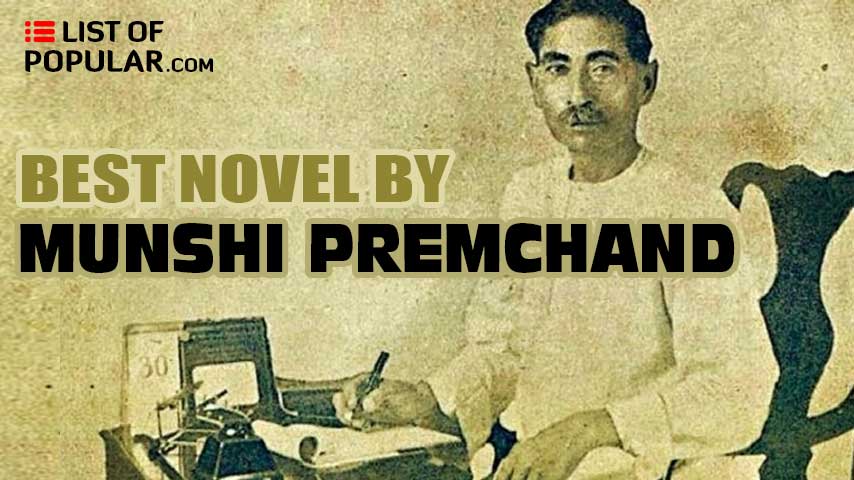1. Godaan
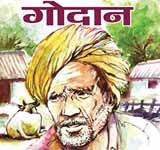
Godan is considered to be Premchand's last and most important novel. Some even consider it his masterpiece. It was published in 1937 AD by the Hindi book Ratnakar Office, Bombay. It has a live depiction of Indian village society and environment. Godan is the epicenter of rural life and agricultural culture. It depicts Progressivism, Gandhism and Marxism (Communism) in full perspective. Godan is the brightest lighthouse for the development of Hindi novel-literature. As a family of Godaan heroine Hori and hero Dhaniya, we find a special culture of India alive and living, a culture which is now ending or is about to happen, yet in which the soil of India is filled. Premchand has made it immortal. Godan is Premchand's Hindi novel in which his art has reached its peak. Godan depicts a living picture of the entire life of the Indian farmer - his aspiration and despair, his piety and self-pity with selfishness and meeting, his helplessness and innocence.
2. Gaban
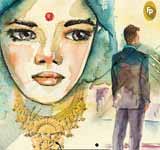
Gaban is a novel written by Premchand. Gaban is Premchand's second realist novel after 'Nirmala'. Must say that this is the sequel to its development. The basic theme of embezzlement is - "women influence on husband's life". Gaban is a novel related to a special concern of Premchand. This topic is the effect of the wife's attachment to jewelry on her husband's life. The real depiction of the middle class wandering in the darkness of the emancipation values. They have made the story come alive by presenting uncompromising and ambivalent attitude and police character. In this novel, Premchand has seen the first women's problem in a broader Indian perspective and linked it to the then Indian independence movement. This indicates a new direction for social life and fiction. This novel explores the reality of life more deeply, breaking the illusion. Gives new inspiration to the reader to explore new avenues.
3. Nirmala
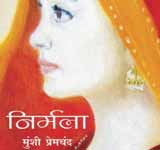
This novel has a special place in the history of women-centered literature. The center and main character of the story of this novel is a 15-year-old beautiful and gentle girl named 'Nirmala'. Nirmala is married to a middle-aged man. Who has three sons from his former wife. Nirmala's character is serene, but still she has to suffer humiliation and disregard in the society. Her husband's perfection does not work. He is doubted, circumstances make him guilty. In this way, Nirmala suffers death from adversity. Nirmala is a sad and poignant story of mismatched marriage and dowry. The goal of the novel highlights the ill effects of mismatched marriage and the dowry system. Through Nirmala, the miserable condition of India's middle class women is depicted. The death of Nirmala at the end of the novel is a tremendous challenge to eradicate this sickening social practice. Premchand has created humor in the novel by the context of Bhalchand and Moteram Shastri. The construction of the Katha Bhawan around Nirmala has completely boycotted the uncomplicated episodes. It can be called Premchand's first 'realist' and Hindi's first 'psychological novel'.
4. Prema
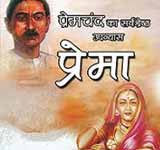
Prema (Hindi) or Hamkhurma-o-Ham Sawab (Urdu) is Premchand's first novel. This novel was originally published in 1907 in Urdu. There are 12 chapters in this novel. It focuses on widow marriage. It highlights the hypocrisy prevalent in religious fetters and temples. This is a novel indicating the future direction of Premchand.
5. Seva Sadan
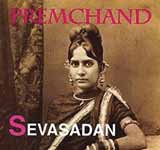
Sevasadan is a novel written by Munshi Premchand. Premchand wrote the novel Seva Sadan in 1917 in Urdu language. Later in 1919, he himself translated it into Hindi. It was written in Urdu under the name Bazaar-e-Husn. In Sevsadan, along with the problems of women life, the priests, mandarins, moneylenders, reformers of society, hypocrisy, dowry-practice, mismatched marriage, bribery of police, prostitution, double character of man, communal malice Etc. get details of social distortions. Suman, the novel's storyline, gets an understanding of social chromosomes after she loses her all in the hope of extra comfort, after which she becomes generous to the world. Her husband becomes a monk and repents his past misdeeds. The novel is believed to have influence from George Elliott's novel Adam Bead and Alexander Kuprin's novel Yama the Pit.
6. Rangbhoomi
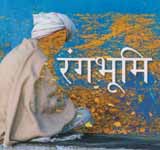
The entire literature of the novel Samrat Premchand (1880–1936) is the saga of the common people of India. Their creations break the boundaries of history, and are counted in classics, going to the infinite range of subject, human spirit and time. Rangbhoomi (1924–1925) novel is one such work. Mass struggle with bureaucracy and capitalism. The frightening picture of truth, loyalty and non-violence, rural life and female sadism is inscribed here. This novel, filled with a sense of nationality amidst the social, political, religious and economic problems of India, greatly elevates the national view of the author. The need to serve the country with selflessness, rising above the sagacity and lusts for the fulfillment of new needs, hopes of the country, was being felt with determination in those days. The whole story of Rangbhoomi is rooted in these feelings and thoughts. The whole life cycle of Surdas, the hero of the story, even his death seems to be the image of the Rashtriya Nayak. The entire story underlines Gandhi philosophy, nishkam karma and the adherence to truth. This collectible book is a heritage of Indian literature in many ways. Apart from Surdas, the role of Sophie, Vinay, John Sevak, Prabhu Sevak is also important in the story. Sophie Mrs. John Sevak, Tahir Ali, Rani, Doctor Ganguly, Clarke, Raja Saheb, Indu, Ishwar Sevak, Raja Mahendra Kumar Singh, Nayakaramghisu, Bajguri, Jamuni, Jahnavi, Thakurdin, Bhairon.
7. Karmabhoomi
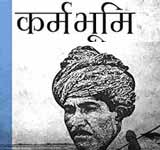
The plot of the novel deals with Kashi and the villages around it. The movement is both in place and the aim of both is revolution. But this revolution is influenced by Gandhiji's Satyagraha. Gandhiji said that the jails should be so filled that there is no space in them and thus the British government can be defeated by peace and non-violence. This is the main problem of this novel. All the characters in the novel are bitten in jails. In this way, depicting the broad side of Premchand's revolution, we connect all the political and social problems in the plot. The problem of the house of the poor, the problem of untouchability, the problem of the entry of untouchables into the temple, the problem of protecting the dignity and saintliness of the Indian women, the problems arising out of the repression cycle of the British Empire, the problem of religious hypocrisy prevalent in Indian society, Renaissance and New Consciousness Problems of transmission in the society, family problems of those who agitate for the nation etc. Has expressed Arthwadi ways. Amarkant, the protagonist of 'Karmabhoomi', is depicted as an unstable Gandhian. Amarkant is the representative of the erstwhile middle class, whose basic tendency is uncompromising towards the situation, his political vision and character firmness are unbelievable. The spirit of mass community influenced by Gandhism, collective satyagraha, creative program of villages has been depicted with full faith. By all his characters, the author has explained Gandhi philosophy in national consciousness, ideal family system etc.
8. Kaayakalp
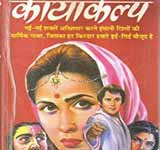
'Kayakalp' is a novel written on a different spiritual background than Premchand's pre-written novels, the story of which is unusual. Imaginary images of past births and future births are presented in this work on the basis of karma and samskaras. In it, the struggle of lust and love is depicted on the spiritual plane and in the end, it is through love that the popular path of mental peace is told. Being a superlative miracle, this novel has not touched the dignity of other novels.
9. Vardaan
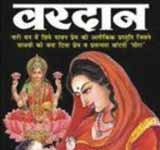
Vardaan is a sad tale of two lovers. Two lovers who played together in childhood, who cherished simple and gentle visions of future life in Tarunai, who had their own dreams of building a beautiful house and their own ideology for determining future life. But the palace of their dreams soon collapsed. In Premchand's novel Vardaan, Sudama asks Ashtabhuja Devi for a boon of a son who engages in the well being of the human. The plot woven by Premchand's powerful pen at this point of view closely examines the conditions of life. Sudama's son Pratap is a character who selflessly helps the oppressed, the patients, the Dalits. There is also a love story of Virjan and Pratap, and the poignant affair of Virjan and Kamalacharan's matchless marriage. Similarly, there is a Madhavi, who is filled with emotion towards Pratap, but in the end she is a sannyasi who prefers to become a yogini herself instead of tying in a Mohapash.
10. Kishna
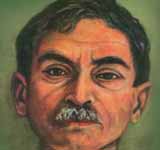
Vardaan is the initial work of Premchand. Its creation dates to 1902, although publication took place after 'Sevasadan' (1916). Prior to 'Varadan' Premchand wrote a short novel 'Krishna' which was printed from Indian Press, Prayag. This is the creation of his student life. Whether Premchand is a 'problematic novelist' or not is a controversial question. Premchand himself has been described as a novelist of person-character - "I consider the novel to be just a picture of human character. The basic essence of the novel is to shed light on human character and to unravel its mysteries." Some critics declare him a social novelist, as if his novels are confined to social themes alone. Even assuming Premchand as a social novelist can be placed in the category of problematic novelist. However, the word 'social' does not reflect all the features of Premchand. Not only social problems are raised in his novels. The other 'social' word is also not indicative of the solitude of the problem.
11. Devasthan Rahasya
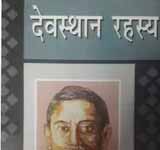
The novel journey of the narrator Munshi Premchand begins with a novel called "Asrar-e-Ma'abid" aka "Devasthan Rahasya". This novel by Premchand was first published in serial form in Varanasi's weekly Urdu paper 'Awaaz-e-Khalk' from the year 1903 to the year 1905. This novel is compiled in his four early novels 'Mangalacharan'. The novel "Asrar-e-Ma'abid" aka "Devasthan Rahasya" is originally written in Urdu. Apart from this novel, three other novels compiled in his 'Mangalacharan', 'Hamkhurma-o-Ham Sawab', 'Prema' and 'Ruthi Rani', 'Hamkhurma-o-Ham Sawab' and 'Ruthi Rani' were also written in Urdu. The novel 'Prema' is in fact a Hindi translation of 'Hamkhurma-o-Ham Sawab'. Although there are differing opinions among scholars regarding the year of publication of Premchand's novels, we have also considered it appropriate to accept the dates set by him due to Dr. Kamalkishore Goenka setting the dates with the evidence. Thus, on seeing Premchand's novels, it is known that they have been chronologically churned.
12. Pratigya
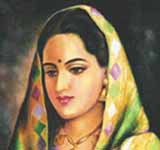
The novel 'Pratigya' is a living depiction of the constraints and destinies of an Indian woman suffocating under odd circumstances. Vidhu Amritrai, the hero of the novel, wants to marry a widow so that the life of a young woman is not destroyed. Poorna the heroin is an unsupported widow. The hungry wolves of society want to break his accumulation. In the novel, Premchand has presented the widow problem in a new form and has also suggested alternatives. Mangalasutra is also Premchand's last and incomplete novel in the same book. He was able to write only a small fraction of it. It is a work immediately after Godan in which the author was at the peak of his powers. In this novel, Premchand depicted the destructive problem prevailing in the mindless Indian society. The character portrayed a poignant portrayal of the compulsions of the widowed and oppressed widows in the society. The characters of Sumitra and Prema are ideal women - while Kamalaprasad is representative of the wicked who persecuted the helpless women. Premchand showed the solution of the legal problem in economic self-reliance, which is conductive. Premchand, in his life, married a child-widow himself and presented an ideal to the society. The language of the novel is simple and practical. The use of proverbs and idioms made the novel come alive. In every sense, this novel is one of Premchand's masterpieces.
13. Premashram
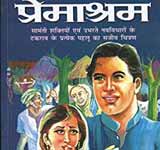
Premashram is Premchand's first rural work published in 1922. The pride of his work is intact in the history of modern Hindi literature. He was an epochal writer who simultaneously gave Hindi works of distinction to Hindi in the fields of poetry, drama, story and novels. As a poet he is revered as the fourth pillar of cinematism with Nirala, Pant, Mahadevi. After Bharatendu in drama writing, he was an era playwright with a different stream, whose plays are still read by the reader. Apart from this, he also gave many memorable works in the field of story and novel. Inauguration of many glorious aspects of human compassion and Indian manisha through various creations. In the short life of 56 years, he composed compositions in various genres like poetry, story, drama, novels and critical essays. He received the Mangalaprasad Prize on 'Kamayani'. He never made literature the medium of earning in life, but he continued to compose literature only by understanding his practice. Overall, a Hindi writer of such diverse talent will rarely be found in Hindi who has enriched all parts of literature with his works.
14. Roothi Rani
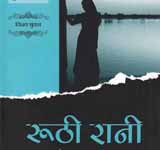
'Ruthi Rani' is a historical novel, in which the valor and patriotism of the kings is presented alive by Premchand, the ideal soldier of the pen. In the novel, such lively pictures of mutual disunity and jealousy of kings are presented that the reader is stunned. The 'Ruthi Rani' has subtle images of the inferior status of a woman under the ill-effects of polygamy, the court conspiracies and their resulting deprivation, as well as the Rajput feudal system. In the work presented, Premchand has called upon the lovers of freedom of the country, saying that unity and organization are also necessary along with courage and bravery.

